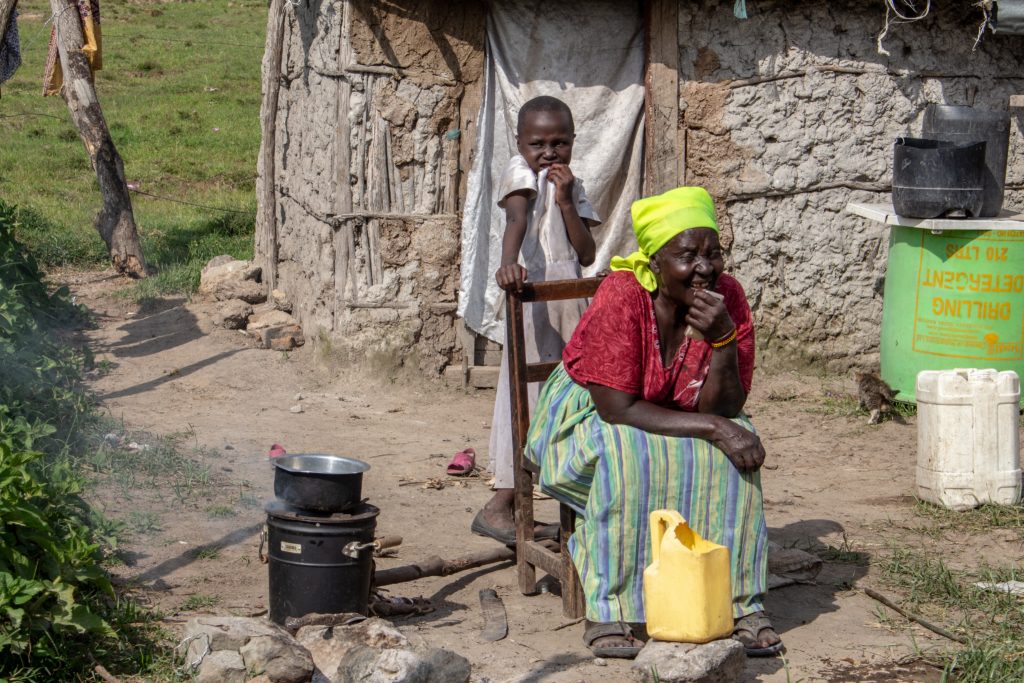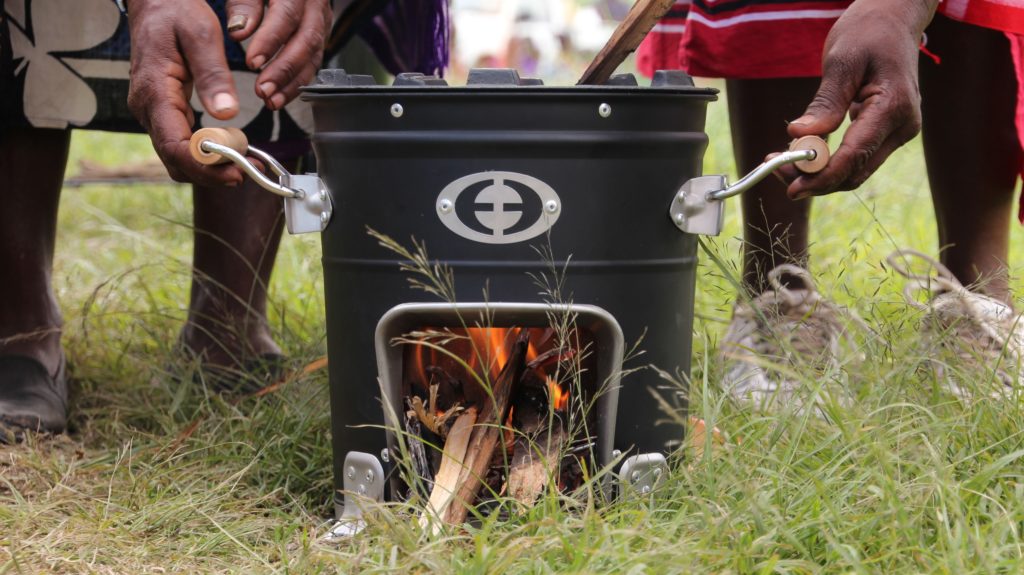By: Isabela Claret Torres, MSc, Ph.D.
Clean cookstoves are solar-powered or fuel-burning household stoves that reduce greenhouse gas emissions by increasing thermal efficiency, reducing specific emissions, or increasing ventilation. In developing countries, the populations often burn wood, charcoal or dung in smoky, open fires to cook their food and heat their homes. The amount of people relying on int this type of stoves amount 2.7 billion (1/3 of the world’s population). In Nepal, 74% of households use open-fire method for cooking. This leads to produce a lot of smoke in the house that cause a stinging smoke burn in their eyes, nose and lungs. This old practice is not only a huge source of carbon dioxide equivalent to the atmosphere, but also have a huge impact on the health of the population.
Cooking-related Health Problems
The main impact to the health is breathing problems, asthma, an increased risk of heart attacks, strokes and lung cancer. The most affected are the women and the children. Unfortunately, in these countries the population doesn’t have any other choice as to cook this way and be exposed to this type of health issues. Exposure to household air pollution (cookstove smoke) leads to roughly 4 million premature deaths each year and is the 4th worst health risk in the world. This is more than the deaths from malaria, tuberculosis and HIV/AIDS combined. The use of this type of cooking is expected to rise 8% by 2030.
Black Carbon
Globally, 25% of black carbon emissions come from household cooking, heating and lighting, and 17% only from cooking alone. In many Asian and African countries, household cooking accounts for 60% to 80% of black carbon emissions. The black carbon particles absorb sunlight and warm the atmosphere. Black carbon is an important contributor to climate warming. Per unit of mass, the warming impact of black carbon is up to 1,500 times stronger than CO2. However, black carbon only stays in the atmosphere for a few days. This is much shorter than carbon dioxide or other climate change pollutants. So, removing black carbon from dirty cooking provides a possible quick win in the effort to combat climate change.
Clean Cookstoves Development

Clean cooking has been on the development agenda for decades. But only recently has the topic become a major priority on the global development agenda. Clean cookstoves were first seen as a way to reduce deforestation caused by cutting down trees for firewood. Since then, they have been advanced as a climate-change solution; as a tool to empower women, who are often the ones selling them locally; and to save poor people time and money that they no longer have to spend gathering or buying fuel that is burned inefficiently. Clean cooking solutions involve both the devices and fuel types. There is still debate on how to exactly define the cleanliness of a particular cooking method.
Clean cooking stoves come in all shapes, sizes, and designs! The primary goal of a clean cooking stove is to reduce the amount of polluting and harmful fuels that households use every day to put food on the table. While each stove design is different, it is made to ensure maximum efficiency, or in some cases, complete elimination of common fuels such as firewood, coal, kerosene, dried animal waste, and more. However, the type (or style) of clean cooking stove depends on many factors, such as the materials readily available, the climate, and the supply chain in the region.
Solar-powered Cookstoves
The solar-powered cooker uses a dish (similar to what is used to capture satellite television). This dish concentrates solar radiation onto a cooking stand, and the result is a completely emissions-free and sustainable stovetop for daytime cooking needs such as breakfast and lunch. The typical savings from this technology amount to roughly $150 per year, or 10% of an average household income.
Clean Cookstoves in Nepal
In Nepal, the clean cooking stove design makes use of innovative adaptations to traditional stoves that families are used to, by adapting things like the combustion compartment or insulation. The result is an improvement of the efficiency of burning traditional fuel sources (such as wood or charcoal) by roughly 43%. While not entirely emissions-free, these low-cost adaptations mean significantly less indoor air pollution and smoke, reducing impacts on climate change and ultimately preventing serious health complications and premature deaths within families. It also means using less material, reducing the amount of deforestation in the region and providing more time to families previously spent collecting firewood.
Other types of projects help community without access to buy natural gas to produce them and canalize them to their clean cooking stoves. The natural gas is produced by the decomposition of the organic material (plants, animal manure etc) in a special constructed simple chamber and canalized to the stove.
Types of Clean Cookstoves
A wide range of cookstove technologies exists, with varying impacts on emissions. Currently, clean options according to World Health Organization WHO include:
- LPG stoves
- electric stoves using hot plates or induction
- electric rice cookers
- ethanol stoves
- biogas and specialized biomass stoves
Climate Impacts of Clean Cookstoves
In addition to climate impacts, the health impacts of using clean cookstoves are significant. Project Drawdown estimates that 3 billion tons of carbon monoxide, 180 million tons of fine particulate matter and 28 million tons of nitrous oxide can be avoided through clean cookstove adoption. Moreover, in India, it was estimated that the dissemination of 150 million clean cookstoves over 10 years could help avoid 2.2 million premature deaths due to household air pollution in the country, and that the reduction in health burden in 2020 (measured in lost healthy life years) would be equivalent to about half the total national cancer burden projected that year. The potential rebound effects of improved health outcome on fertility rates, consumption rates, and emissions are hard to predict and are not studied in the literature.
Quality of Life
Clean cookstove is now a reality for many people and is helping in the fight against global climate change and improving the quality of life of the poorest population of the world. There are some drawbacks, and some communities have a hard time getting used to this new technology. But with the development of better clean cookstoves and education this scenario can change. It is another way to fight global climate change. Each one doing a little to do a lot together.
About the Author:
Isabela started her work with the environment in 1993 as a Biology Bachelor student at the highly regarded Federal University of Minas Gerais (UFMG/Brazil). Later she joined the Graduate Program on Ecology, Conservation and Management of the Wildlife of the same University (UFMG/Brazil) where she received her Masters degree in 1999. Later, she received her Ph.D. on Soil and Water Science at the University of Florida (USA). During her Ph.D. studies she received an Outstanding Student Poster Award at the ASLO (American Society of Limnology and Oceanography) 2006 Summer Meeting held in Victoria (Canada). After working for the State Government Secretary, consulting environmental company and watershed management company she began her post-doctorate in the Geography Department at UFMG (Brazil). Throughout her career she gathered knowledge and specialized on Biology, Ecology, Soil Science, Limnology, Paleolimnology, Biogeochemistry, Organic Geochemistry, Metal and Environmental pollution.
Sources:
Improved Clean Cookstoves | Project Drawdown
What is clean cooking? | RVO.nl
Cookstove Project Makes Homes in Nepal Pollution Free | Global Peace Foundation

